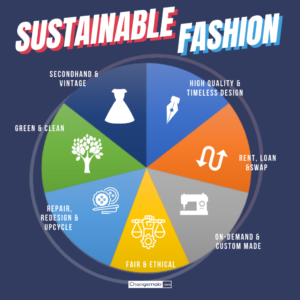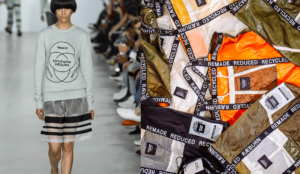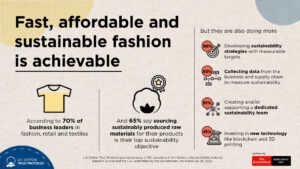
The fashion industry, notorious for its environmental impact, is undergoing a transformative shift. Sustainable fashion brands are leading this revolution, merging style with responsibility to redefine modern fashion. This article explores how these brands are changing the narrative, making sustainability a core component of their identity, and gaining consumer trust and market share.
The Rise of Sustainable Fashion
Understanding Sustainable Fashion
Sustainable fashion, also known as eco-fashion, focuses on creating clothing in a way that respects the environment and the people involved in its production. This includes using eco-friendly materials, ethical labor practices, and minimizing waste. The goal is to reduce the carbon footprint and promote a circular economy where clothes are designed to last longer and be recycled or repurposed.
Consumer Demand for Sustainability
Today’s consumers are more environmentally conscious than ever before. They demand transparency and accountability from brands. According to a Nielsen report, 73% of global consumers say they would definitely or probably change their consumption habits to reduce their environmental impact. This shift in consumer behavior is driving the fashion industry towards more sustainable practices.
How Sustainable Fashion Brands Are Leading the Way
Innovative Materials and Production Techniques
Sustainable fashion brands are pioneering the use of innovative materials that are less harmful to the environment. These include organic cotton, recycled polyester, Tencel, and hemp. Additionally, brands are investing in production techniques that reduce water usage, chemical use, and waste. For example, some brands use digital printing, which uses less water and produces less waste compared to traditional dyeing methods.
Ethical Labor Practices
Beyond environmental concerns, sustainable fashion also addresses ethical labor practices. Brands are ensuring fair wages, safe working conditions, and respect for workers’ rights. Companies like Patagonia and Everlane are known for their transparency about their supply chains and commitment to ethical labor practices.
Circular Fashion
The concept of circular fashion is gaining traction. This involves designing clothes that can be easily recycled or repurposed at the end of their lifecycle. Brands like Eileen Fisher and Stella McCartney are leaders in this area, creating take-back programs where customers can return their old clothes to be recycled into new garments.
The Impact of Sustainable Fashion
Environmental Benefits
The environmental benefits of sustainable fashion are significant. By using eco-friendly materials and production methods, sustainable fashion brands reduce pollution, conserve water, and minimize waste. This contributes to the fight against climate change and helps preserve natural resources for future generations.
Economic Impact
Sustainable fashion also has a positive economic impact. It creates job opportunities in developing countries where many of the raw materials are sourced and garments are produced. By ensuring fair wages and safe working conditions, sustainable fashion supports economic development and improves the quality of life for workers.
Social Responsibility
Sustainable fashion brands are also driving social change. They promote ethical consumerism, encouraging people to make more conscious choices about their purchases. This shift in mindset is crucial for creating a more sustainable future.
Challenges and Future Directions
Overcoming Greenwashing
One of the main challenges in sustainable fashion is greenwashing, where companies falsely claim to be environmentally friendly. Consumers must be vigilant and research brands’ claims to ensure they are genuinely sustainable. Certifications like Fair Trade, GOTS (Global Organic Textile Standard), and B Corp can help verify a brand’s sustainability credentials.
Making Sustainability Accessible
Another challenge is making sustainable fashion accessible and affordable for all consumers. While sustainable fashion often comes with a higher price tag due to the cost of eco-friendly materials and ethical labor practices, brands are working to find ways to reduce costs without compromising on sustainability.
The Role of Technology
Technology plays a crucial role in advancing sustainable fashion. Innovations such as 3D printing, AI-driven design, and blockchain for supply chain transparency are helping brands become more sustainable. These technologies can improve efficiency, reduce waste, and increase transparency in the fashion industry.
Conclusion
Sustainable fashion brands are redefining style and responsibility in the modern world. By embracing eco-friendly materials, ethical labor practices, and innovative production techniques, they are setting new standards for the fashion industry. The rise of sustainable fashion reflects a broader cultural shift towards environmental consciousness and social responsibility. As consumers continue to demand more from their clothing, sustainable fashion brands will play a vital role in shaping the future of the industry.

